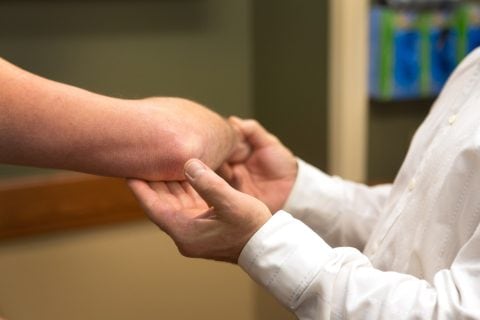Expert Treatment for Elbow Conditions
The elbow is one of the weakest joints in your body and is commonly affected by sports and physical activity. If you’re experiencing elbow joint pain, you may need an orthopedic specialist to evaluate what may be causing your pain.
The board-certified specialists at ValleyOrtho can evaluate, diagnose and recommend non-surgical or surgical treatment options for your elbow and upper extremity condition. Many elbow conditions can be managed without surgery with things such as; physical therapy or home exercises, injections, bracing, or medications.
If your elbow condition does require surgery, your doctor will use state-of-the-art technology and techniques to perform expert surgery. At Valley View, elbow surgery is always paired with physical or occupational therapy and strengthening exercises to help you recover and return to normal activity.

